The Hidden Burden of Dental Anxiety
Dental anxiety is a widespread yet often unspoken challenge that affects millions worldwide. Ranging from mild unease to debilitating phobia, it can profoundly impact oral health and overall well-being by driving avoidance of essential dental care. This article sheds light on the nature of dental anxiety, its causes, effects, and various ways to cope and overcome this barrier to good dental health.
Defining Dental Anxiety and Its Impact on Oral and Overall Health
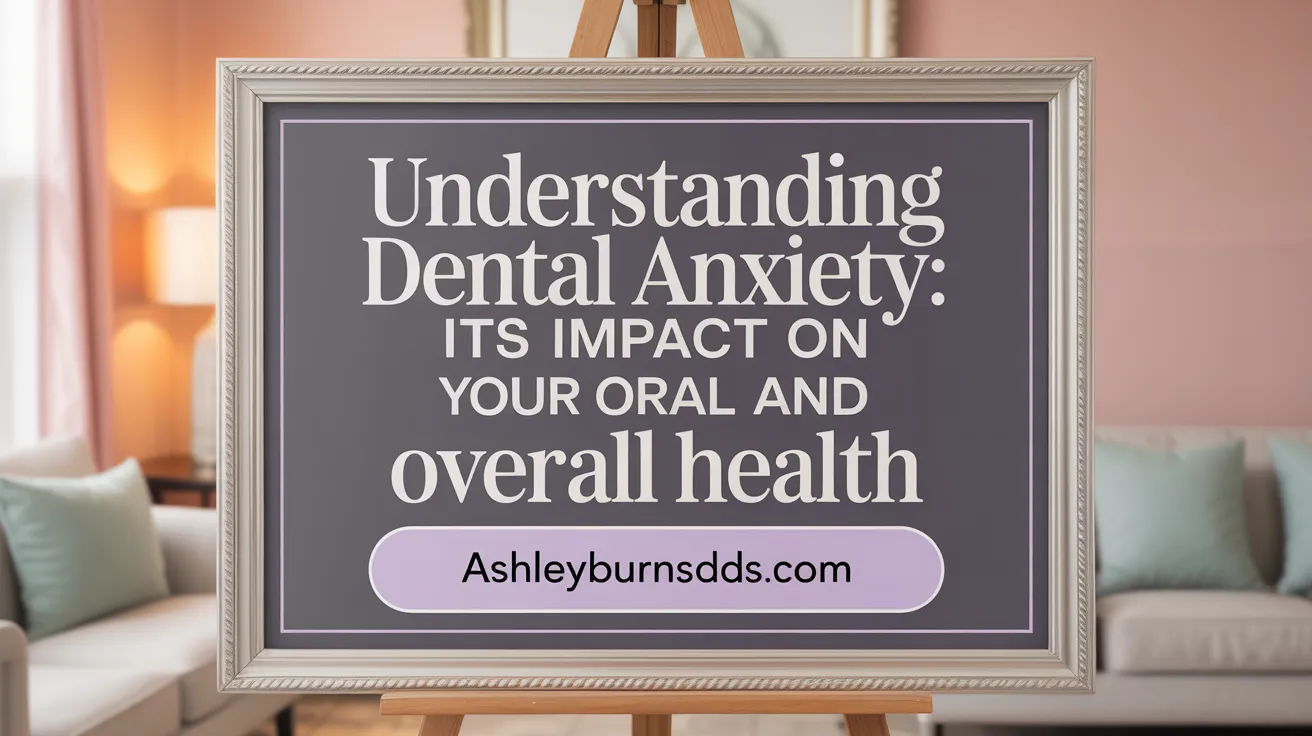
What is dental anxiety and how does it affect dental health and overall well-being?
Dental anxiety is a common psychological condition where individuals experience an excessive fear or stress associated with dental visits and procedures. This fear can vary from mild unease to a severe phobia, leading to avoidance of necessary dental care. When people skip dental appointments, oral health can deteriorate, resulting in cavities, gum disease, and other dental problems.
Avoidance of dental care doesn’t just harm teeth and gums; it also has broader health implications. Poor oral health has been linked to systemic health issues such as heart disease, diabetes, and respiratory infections. As untreated dental conditions worsen, they often require more invasive and expensive treatments.
Managing dental anxiety is crucial for maintaining overall health. Techniques like relaxation exercises, sedation options, and transparent communication with dental providers can help calm fears. Early intervention and supportive care encourage regular dental visits, which are vital for early detection and prevention of dental and systemic health problems.
In summary, dental anxiety significantly impacts both oral and overall health, making effective management strategies essential for long-term well-being and disease prevention.
Common Causes and Triggers of Dental Anxiety
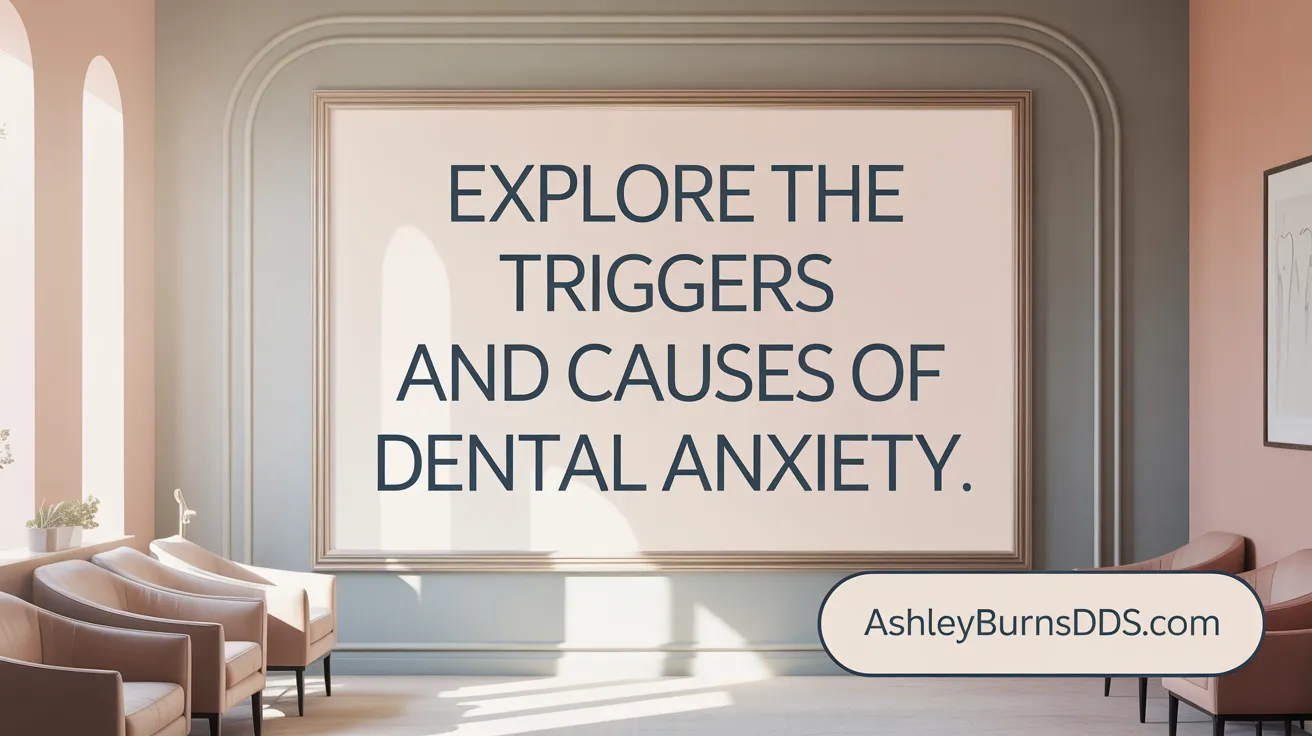
What are the common causes and triggers of dental anxiety?
Dental anxiety can arise from a variety of sources, often interconnected and influenced by personal experiences and perceptions. One of the primary causes is past traumatic dental experiences, such as dental treatments that involved pain, discomfort, or unpleasant sensations. These experiences, especially during childhood, can create lasting fears that persist into adulthood.
Beyond personal history, observational learning plays a significant role. Witnessing family members or peers exhibit fear of dental work can influence one’s own anxiety levels. Media portrayals of dentists or dental procedures may also reinforce negative stereotypes, fueling fear.
Additionally, triggers related to sensations and surroundings in dental settings contribute to anxiety. Hearing the sound of drills, seeing dental instruments, or the sight of the dental chair can provoke fear responses. External cues like the smell of disinfectants or the feel of dental gloves and tools can further trigger anxiety.
Internal factors are equally important. Many individuals experience fear of pain or worries about loss of control during procedures. Concerns about side effects from anesthesia or potential gagging also reinforce apprehension. Personal beliefs about invasion of personal space or embarrassment about oral health status can heighten discomfort.
Demographic and psychosocial factors influence susceptibility. Women are generally more prone to dental fear, and individuals from lower socioeconomic backgrounds may experience greater anxiety, often linked to concerns about treatment costs. Mental health conditions such as generalized anxiety disorder, depression, or trauma histories can also increase the likelihood of experiencing dental phobia.
Understanding these diverse causes allows dental professionals to more effectively address and manage patients’ fears, encouraging better dental attendance and oral health care.
Recognizing the Signs and Symptoms of Dental Anxiety
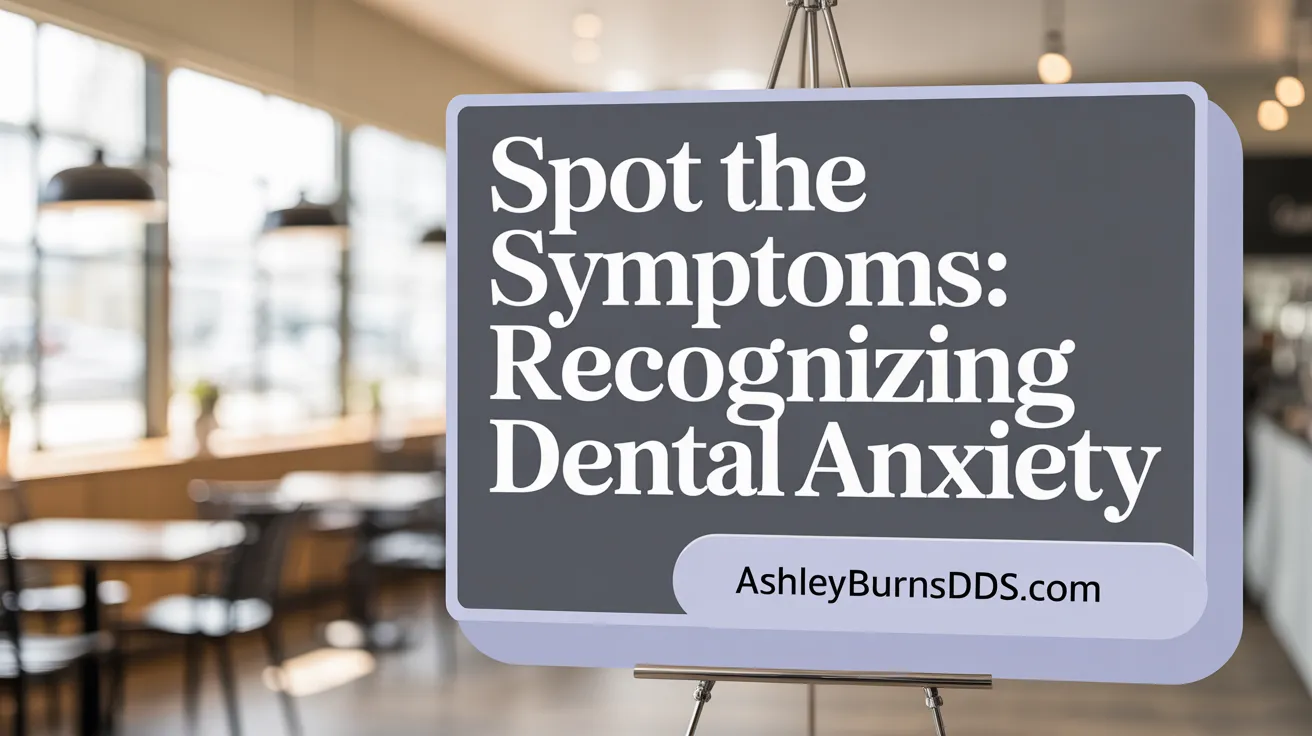
What symptoms and signs indicate the presence of dental anxiety?
Recognizing dental anxiety involves observing both emotional and physical cues that a person may exhibit when faced with dental care. Common emotional and behavioral signs include excessive nervousness before appointments, visible distress such as crying or trembling, withdrawal from treatment, or masking anxiety through humor or aggression. Individuals often display avoidance behavior, such as canceling or delaying dental visits, which can lead to worsening oral health.
Physically, dental anxiety manifests through symptoms like sweating, rapid heartbeat or palpitations, increased or decreased blood pressure, and a feeling of butterflies or nervous tension in the stomach. Other physical signs include dry mouth, nausea, dizziness, and difficulty breathing, especially during dental procedures. Some individuals may experience stomach upset or nausea that worsens with anxiety.
These signs are crucial for dental professionals to identify, as unmanaged dental anxiety can lead to avoidance of dental care, resulting in untreated dental problems like cavities, gum disease, and even systemic health issues. Early detection allows for tailored management strategies such as relaxation techniques for dental anxiety, psychological support, or mild sedation, ensuring a more comfortable experience and promoting better oral health outcomes.
The Psychological and Mental Health Effects of Dental Anxiety
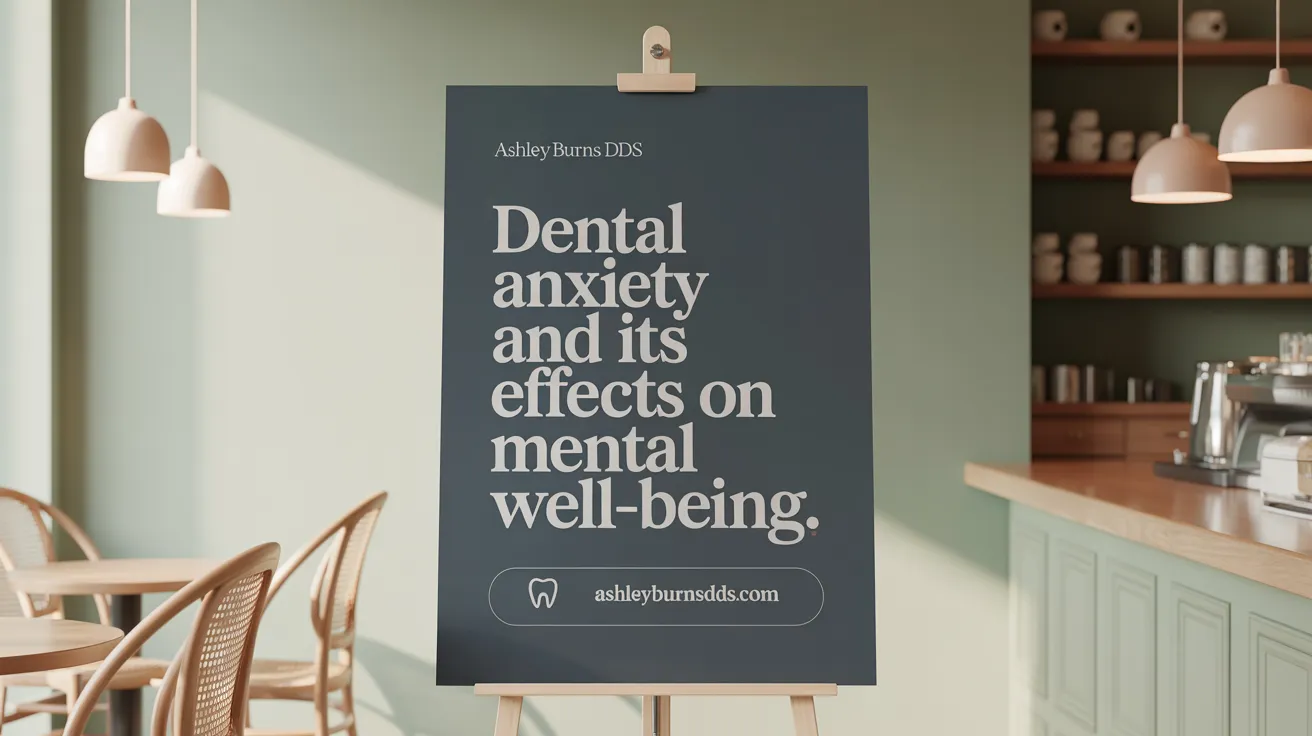
How does dental anxiety affect psychological and mental health?
Dental anxiety doesn't just impact oral health; it can also significantly affect a person's mental well-being. It often exacerbates existing mental health issues such as generalized anxiety and depression. When dental fears lead individuals to avoid visits, they may experience increased stress and feelings of helplessness. This avoidance can create a vicious cycle of dental anxiety where worsening oral health further contributes to low self-esteem and morale.
Research shows that high levels of dental anxiety are linked with broader psychosocial consequences, such as reduced self-confidence and social withdrawal. People anxious about dental visits often struggle with feelings of embarrassment about their oral health, which can diminish their overall quality of life. Furthermore, the persistent worry and stress caused by dental fears can heighten anxiety symptoms, making individuals more prone to depression and other mood disorders.
Connection to general anxiety and depression
Individuals with pre-existing mental health conditions, including anxiety disorders and depression, are more susceptible to dental fear. The fear of pain, loss of control, or negative past experiences can intensify these conditions. Such psychological distress can make dental care seem overwhelming, leading to further avoidance and deterioration of both dental and mental health. More about this connection can be found in discussions of the impact of dental anxiety on mental health.
Psychosocial consequences
The emotional toll of dental anxiety includes reduced self-esteem and morale. Many feel self-conscious about their dental appearance, which impacts their social interactions and confidence. These feelings of shame or embarrassment can inhibit personal and professional relationships, underscoring the importance of recognizing and addressing dental fear as part of holistic health care.
For more detailed insights into these impacts, exploring recent research on the psychological effects of dental anxiety can offer valuable guidance for healthcare professionals and patients alike.
Assessment Techniques for Evaluating Dental Anxiety
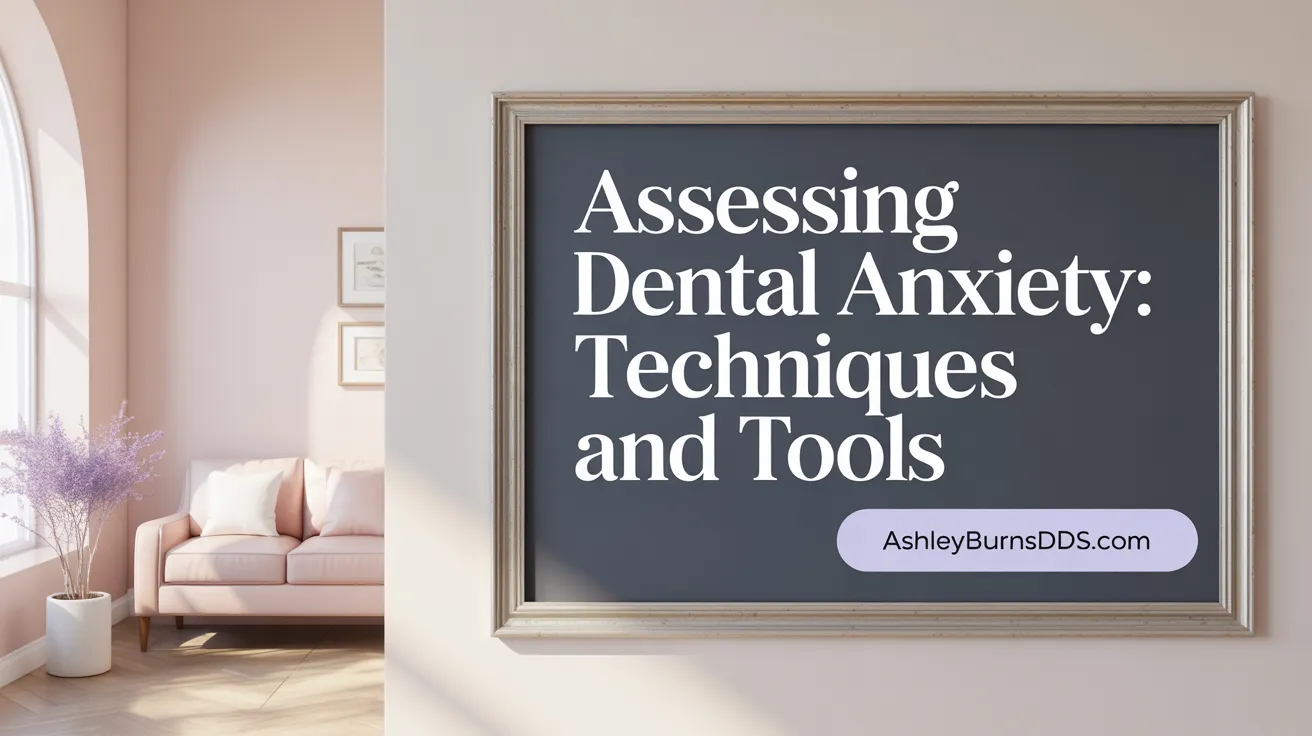 To effectively identify and understand a patient's level of dental anxiety, dental professionals employ a variety of assessment methods. One common approach is the use of established questionnaires such as the Dental Anxiety Scale (DAS) and Corah's Dental Anxiety Scale (CDAS). These tools provide standardized measures that help quantify the degree of anxiety a patient experiences, offering valuable insights for tailored treatment plans.
To effectively identify and understand a patient's level of dental anxiety, dental professionals employ a variety of assessment methods. One common approach is the use of established questionnaires such as the Dental Anxiety Scale (DAS) and Corah's Dental Anxiety Scale (CDAS). These tools provide standardized measures that help quantify the degree of anxiety a patient experiences, offering valuable insights for tailored treatment plans.
In addition to questionnaires, clinical interviews serve as a vital assessment tool. During these conversations, dentists or psychologists ask about past dental experiences, specific fears, and behavioral responses to dental settings. This personalized dialogue can uncover underlying causes of anxiety and help build rapport.
Behavioral observations also play a crucial role. Observing a patient's physical reactions, such as sweating, restlessness, or observable distress during dental procedures, can indicate their anxiety levels. These cues enable practitioners to adapt their approach in real-time, employing calming techniques or sedation if necessary.
Collectively, these assessment techniques—questionnaires, interviews, and behavioral observations—offer a comprehensive understanding of dental anxiety, guiding interventions that can improve patient comfort and encourage regular dental care.
Effective Management Strategies and Coping Techniques
What management strategies and coping techniques are available to help individuals with dental anxiety?
Managing dental anxiety requires a multifaceted approach that combines psychological, behavioral, environmental, and pharmacological strategies.
Psychological interventions such as cognitive-behavioral therapy (CBT) are highly effective. CBT helps patients identify and challenge negative thoughts about dental treatments and learn coping skills to reduce anxiety. Relaxation exercises, including deep breathing, muscle relaxation, and guided imagery, are also valuable tools that help calm the mind and body during dental visits.
Behavioral methods like systematic desensitization involve gradually exposing patients to dental stimuli in a controlled manner, reducing their fear responses over time. Techniques such as tell-show-do, where the dentist explains procedures, demonstrates equipment, and then performs treatments, can build trust and lessen uncertainty.
Creating a soothing environment in the dental office also plays a crucial role. Adjustments like dimmed lights, calming music, aromatherapy, and visual distractions help set a tranquil atmosphere that eases patient distress (sensory-adapted dental environments).
For those with severe anxiety, pharmacological options include inhalation sedation with nitrous oxide (laughing gas), oral anxiolytic medications like diazepam, or even deeper sedation through intravenous routes or general anesthesia. These methods provide relief and facilitate dental procedures when behavioral techniques alone are insufficient.
Open and honest communication between patients and dental providers enhances trust, encourages patient cooperation, and allows tailoring of specific anxiety-management strategies. Emphasizing empathy and understanding can lead to improved experiences, better oral health, and reduced lifelong dental fears.
Clinical and Non-Clinical Treatment Options for Dental Anxiety
Dental anxiety can be managed through a variety of both clinical and non-clinical interventions, tailored to the severity and underlying causes of a patient's fear.
Among the clinical options, pharmacological treatments play a significant role. Sedation dentistry allows for a calmer experience through methods like nitrous oxide (commonly known as laughing gas), which provides relaxation while keeping the patient responsive. Other options include oral anxiolytics, such as temazepam, for pre-visit anxiety reduction, as well as intravenous (IV) sedation and general anesthesia for severe cases or complex procedures. These methods are administered by trained professionals to ensure safety.
In addition to medication, psychological therapies are effective long-term solutions. Cognitive-behavioral therapy (CBT) is widely used to help patients recognize and modify negative thought patterns related to dental visits. Hypnosis, guided imagery, and systematic exposure therapy are also employed to gradually desensitize patients to dental stimuli.
Non-clinical strategies focus heavily on environmental and educational changes. Adjustments like creating a calming atmosphere—using soothing lighting, aromatherapy, and reducing noise—can significantly reduce stress. Patient education is crucial; informing patients about procedures, setting realistic expectations, and encouraging active participation through signals (such as raising a hand to pause) foster a sense of control. Such effective communication with anxious patients improves trust and comfort.
Relaxation techniques such as deep breathing, muscle relaxation, meditation, and distraction devices like music or stress balls are simple yet effective methods that patients can practice before and during treatment to reduce anxiety (relaxation techniques for dental anxiety).
Gradual exposure to the dental environment, starting with non-invasive procedures, helps build confidence and reduces fear (gradual exposure therapy). Establishing a trusting relationship through empathetic communication and positive reinforcement further enhances comfort.
Combining these approaches—clinical sedation when necessary, psychological therapy, and supportive environmental modifications—provides a comprehensive strategy for managing dental anxiety. This integrated approach aims to improve patient experiences, promote regular dental care, and maintain optimal oral health (importance of regular dental visits).
Practical Tips to Cope with and Reduce Dental Anxiety
Open communication with dental professionals
One of the most effective ways to manage dental fear is to openly talk with your dentist. Sharing your anxieties allows the dental team to tailor their approach, use gentle techniques, and provide reassurance throughout the treatment. Many dentists are trained to handle nervous patients and can explain procedures step-by-step to help ease your worries.
Relaxation and mindfulness exercises
Practicing relaxation strategies like deep breathing, meditation, or guided imagery before your appointment can significantly lower anxiety levels. These techniques calm your nervous system and make the experience more manageable. Incorporating mindfulness into dental visits, such as focusing on your breath or sensations, helps keep your mind centered and reduces panic. See more on relaxation techniques for dental anxiety.
Use of distraction and support persons during visits
Distraction methods, including listening to calming music through headphones, squeezing a stress ball, or watching a favorite show, divert attention away from the procedure. Bringing a trusted support person along can also provide emotional comfort and boost confidence, making the visit less intimidating. Learn about distraction methods during dental visits.
Sedation options for severe anxiety
For those with intense dental fear, sedation techniques like nitrous oxide (laughing gas) or conscious sedation can facilitate a more relaxed experience. These methods are administered by professionals and help minimize discomfort and distress. In extreme cases, general anesthesia may be used, especially for complex procedures.
Choosing appropriate dental providers and gradual exposure
Selecting a dental practice experienced in treating anxious patients and emphasizing comfort can improve your overall experience. Gradual exposure—starting with simple visits and slowly progressing to more involved treatments—can help desensitize your fears over time. Building trust gradually ensures you feel more in control and less fearful during future visits. For more on managing dental fear through professional support, see tips to cope with dental anxiety.
Overcoming Dental Anxiety for Healthier Smiles
Dental anxiety, though common and often deeply disruptive, does not have to stand in the way of achieving and maintaining good oral health. Through understanding its causes, recognizing symptoms early, and applying comprehensive assessment techniques, patients and dental professionals can work together effectively. A broad spectrum of management and treatment strategies, ranging from psychological support to sedation, empowers individuals to face their fears and receive necessary care. Embracing practical coping methods further enhances patient comfort, breaking the cycle of avoidance. Ultimately, addressing dental anxiety is a crucial step toward better oral health, improved quality of life, and greater overall well-being.
